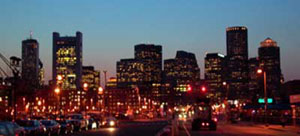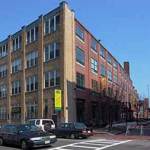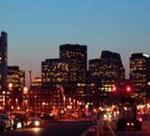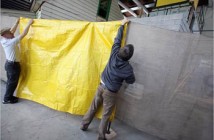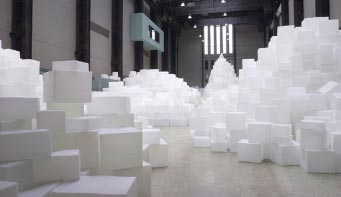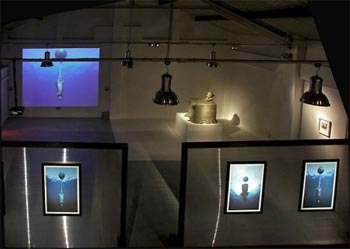Boston has some of the same self-image issues that Atlanta does, the city where I lived until 1996. Both cities think of themselves as conservative and strive to be “World Class Cities”. They overlook their assets: they are beautiful, they have trees and open space everywhere and they are highly sought after places to live and work. Instead they dwell on a history of losing both artists and art buyers to New York City.
Boston’s “livability” and its history are its main attractions. It is actually not conservative or puritanical. Boston has great performing arts venues, and with the reopening of the old Opera House and the Emerson Majestic’s beautiful restoration, we are starting to preserve older landmarks for the first time in decades. Boston and Cambridge are filled with great spots to hear music cheap and enough sophistication for both serious culinary and cultural variety.
Part I: Quantitative
1) Number of Exhibition Venues
In this category big things seem to be happening. The Harrison Avenue “First Friday” events are continuing to create a buzz and coalesce the social side of gallery going. Anyone who feels lonely in their studio needs only to wander into the courtyard of 450 Harrison Street to feel surrounded by enthusiastic art worshipers. The number of galleries continues to climb and the core galleries like Genovese Sullivan, Bernard Toale, Allston Skirt, Clifford Smith are consistently showing interesting work. Open Studios Press and the cooperatives like Bromfield Gallery and Kingston Gallery really benefit from the added audiences these first Friday events bring in.
Newbury Street continues to exhibit the Blue Chip international artists with Barbara Krakow, Neilson and Howard Yezerski leading the way.
On a sour note, while commercial galleries seem to be proliferating, and Green Street Gallery is in it 6th year of street level exhibitions in Jamaica Plain, some alternative spaces like Oni, Berwick Research Institute and others have come under fire from city regulators. Inspectional services and the licensing folks that define what constitutes a “Nightclub” are eroding the foundations of some of our most important experimental venues. The Berwick is in a “Research Residency” mode (see Meg Rotzel’s article in BigRedAndShiny) to avoid the city’s wrath and Oni is closed because their landlord has not kept the building up to code. Let’s hope that we can finally develop a clear policy on city permitting for small space performance and sound works that need an audience and a per-person fee to break-even.
2) Rate of exodus of artists to New York
The state of the arts in Boston depends, in part, on the rate we lose talented artists educated here to New York. Artists dream of living there and getting to exhibit in a Chelsea Gallery space and “making it big”. In fact, just living in New York seems to be a badge of honor and solid evidence of a certain level of professional success for artists of all ages. Happily, I have seen a significant shift in the last two to three years away from immediate relocation to New York as a formula for post-graduate success. Currently more people that we have exhibited at Green Street stay here after graduate school than at any time since 1998.
I have also witnessed many artists and gallerists buy a home, condo, or live/work space in Boston. That’s right - BUY. The major reason behind this is a program at the BRA (Boston Redevelopment Authority) which has been setting aside a percentage of “below market” and “affordable” housing and live/work spaces in some new developments for artists. There is a straight forward “Artist Certification” process that determines who can claim to be an artist for housing fairness purposes and a panel of local arts professionals decides who is certified ( I have been on the panel twice now) and currently over 80% of applicants are approved. Susan Hartnett and Heidi Burbridge have been running this program and now Heidi is in charge of the certification process and can be reached at the BRA in City Hall.
The increase in affordability of a FEW places to own in Boston has also spread to the rental market where the new dorms at MassArt, Wentworth and Northeastern have increased the availability of rental apartments to students and non-students. And while the rents are still too high and can seem comparable to Brooklyn prices, the amount of room you get for the money in Boston is far greater than in New York. These “livability” improvements have been one of the main reasons that people are sticking around longer. When was the last time you heard of someone BUYING a place in New York?
3) Availability of Affordable Workspaces/Studios
Available, affordable studio space is the hardest to find and most confidential insider info that an artistic community possesses. While the radical changes in large studio building ownership in Jamaica Plain and Fort Point upset the long-standing, stable artist communities in both those areas, the slight increases in studio availability in places like Sprague Street in Hyde Park, Vernon Street in Somerville, Dorchester and a few openings and studio lease extensions in Fort Point have eased the feeling of crisis for many artists. The 89 new spaces that the Fort Point Arts Community and the FPCC has negotiated to develop next year seem to be the only significant new workspaces in Boston. The incentives to create inexpensive, safe workspaces for artists are nonexistent compared to the pressure to develop “Loft-Style Luxury Condominiums” which leads to the transformation of many current studio buildings into super profitable “Lofts”. This gold rush needs to be guarded against since many of these historic buildings are uniquely appropriate for studio use. The loading dock and freight elevators as well as load bearing floors and commercial zoning are a perfect fit for any creative worker that works large scale (or the late night, noisy types).
Part II: Qualitative
1) Visibility at the Museum Level
This has also been a real bright spot for Boston-based artists in the last year. Exhibitions at the Rose Museum, the ICA, the MFA and the 2004 Whitney Biennial have featured Boston artists and in doing so help to propel artists from the area into the international spotlight.
The year’s top honors go to Layla Ali and Taylor Davis who were both selected for the 2004 Whitney Biennial. These two have both won the ICA’s Artists Prize in the past and continue to receive national and international attention. Douglas Weathersby was this year’s Artist’s Prize winner at the ICA and was later featured in a major exhibition ”Domestic Archeology” curated by Raphaella Platow at The Rose Museum at Brandeis University along with local artists Davis Bliss and Edyth Wright and two international artists, Haim Steinbach and Karsten Bott.
The “Son et Lumiere” exhibit at The List Visual Art Center at MIT, also features talented media artists from Boston, Michael Mittelman, Bruce Bemis and Jessica Rylan (see Meg Rotzel’s interview with Jessica in this issue) in an amazingly well installed and immersive exhibition curated by Bill Arning.
The yearly installations at the DeCordova Museum and Sculpture Park’s Annual Exhibition were the best in recent memory with exceptional work by Hannah Barrett, Bruce Bemis, Morgan Cohen, Steve Hollinger, Heather Hobler Keene and The MFA’s Traveling Scholars Exhibition featured outstanding work by Eirene Efstathiou and Boru O’Brien O’Connell among others.
The “Garden of Earthly Delights” at MassArt which featured Bostonians Amy Ross, Megan Cronin and RISD professor Dean Snyder was curated by Lisa Tung may be the best group show of the year. In addition to the museum exhibitions the 17th Annual Drawing Show at the Mills gallery at the BCA (with a few notable exceptions) was an encouraging look at our prodigious local talent.
2) Critical Success in the Media
This is the big suckfest of NOT being in New York. The only dedicated coverage of the arts in Boston is left up to Cate McQuaid, of The Boston Globe, and every week she visits handfulls of galleries and every week she writes a combination of two or three reviews with a photo or two. She has expanded her role under Scott Heller, the newish Arts Editor at the Globe and the reviews have more insight and length than they used to.
Too bad the Boston Herald doesn’t give Joanne Silver an assignment every week - she is the most under appreciated and perhaps most talented writer they have. The same goes for Randi Hopkins, who co-curates and co-directs Allston Skirt with Beth Kantrowitz. Her 8 Days a Week galleries column for The Boston Phoenix and always finds great exhibitions around town each week. I wish she had a larger role more often - I would trade her historically contextualized, insightful criticism for listening to Christopher Millis talk about himself for the first three paragraphs of every article he writes in a minute.
Boston has more than a few good writers, who have far too few column inches and no really good art criticism magazines - not even Art New England, which is probably the best, really gives writers enough room to hash anything out in print , and they have shortened the reviews recently to 400-800 words (note to Barbara O’Brien and Portia Belz - you have the space, give us longer reviews and smaller maps!).
ArtsMedia is now in color - but who cares! -it has shrunk to about six pages and is sticking to the stupid idea that we need to read reviews about shows while they are up. That means that they were written about BEFORE they have been installed - what a lie! Many of us have spent years of our lives dedicated to curating shows because we believe that the arrangement and selection of work in an exhibit shapes the viewer’s response to it. The activity of dropping by an artists studio a month before a show and reviewing the “exhibition” is ludicrous and dishonest. And what’s the hurry? I remember back when ArtsMedia was very good, when Andy and Erin ran it, or Wes Mills and I really miss it.
Open Studios Press, which produces New American Paintings is a beautifully produced locally published, nationally distributed picture book which, although not critically based, is a real resource for artists, galleries and museums.
Media coverage and critical writing is where it really hurts to be in Boston, so BigRedandShiny is trying to change that (thanks for tuning in). The network television stations completely ignore the visual arts, except for blockbusters at the MFA, with the exception of Art Close Up (formerly Greater Boston Arts) which just can’t make enough episodes for me.
The bad news is: in Boston you can curate a great exhibition, get a huge crowd to come and see it, maybe even sell some work, but there is a 50% chance it will never get written about at all. That is a serious problem for Boston’s “World Class City” ambitions not to mention the devastating effect it has on our cultural tourism.
Conclusion
It comes down to this: There are good things about being small and Boston has all of them; you can feel like you know everyone, you can get noticed as an artist, and you can still have energy to work in the studio after driving across town from work. The pace is a bit slower and you even can have garden in many neighborhoods. Boston is as “small” a big city as a visual artist can stand to live in without starving for culture, inspiration, diversity and international exposure. Boston area art schools are able to attract and hold on to both teachers and students that are top notch because the city is attractive to live in, and is accessible enough to New York City. Atlanta and Providence are just a little too small, requiring trips to other cities for significant visual arts events except for Pro-Wrestling and Strip Clubs - which come to think of it might actually be the same thing...
All in all, if you can find a nice place to live and get in some good shows things look pretty good to you as an artist. With the past twelve months as a guide I would say that the state of the arts in Boston is very good. Artists here stack up well to New York and International artists and we can be proud of our local institutions for supporting artists who live and work here.
The schools keep cooking and the recent graduates look as promising as ever. The gallery landscape is varied and expanding, and if we exhibit it they will come. We just need more critical writing and a deeper assessment of what happens here for Boston to show up more prominently on the national/international radar.
- Boston-based artist Douglas Weathersby working on a cleaning piece.
- The South End gallery district has quickly become the core of contemporary art in Boston.
- How can a city this beautiful not have a thriving art community?
----
Links:
Gallery @ Green St.
Taylor Davis
Douglas Weathersby
Oni Gallery
Berwick Research Institute
All images are courtesy of James Hull and the Green Street Gallery.
James Hull is the Founding Director of the Green Street Gallery. He is also an independent curator and artist.

